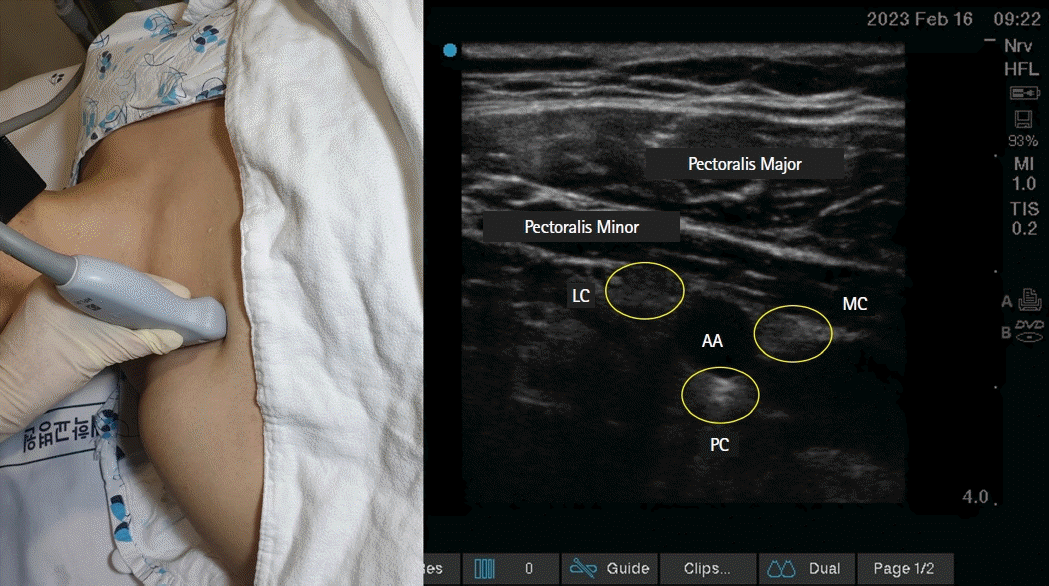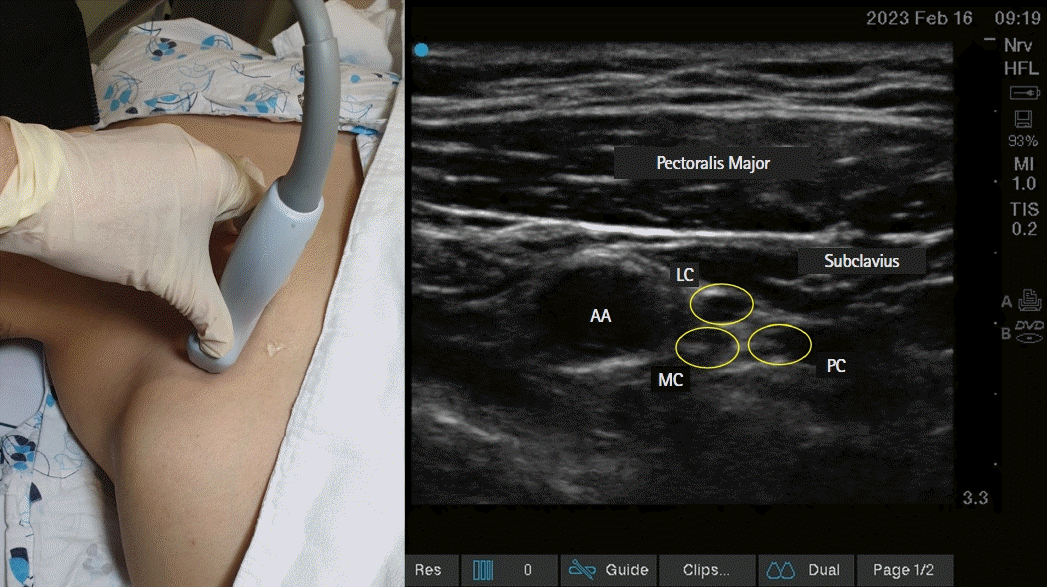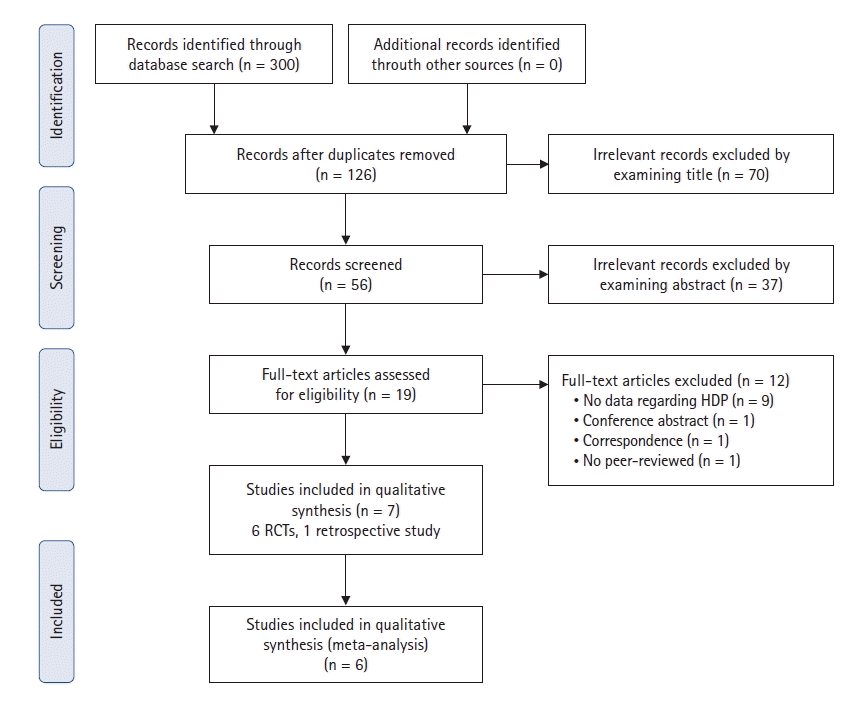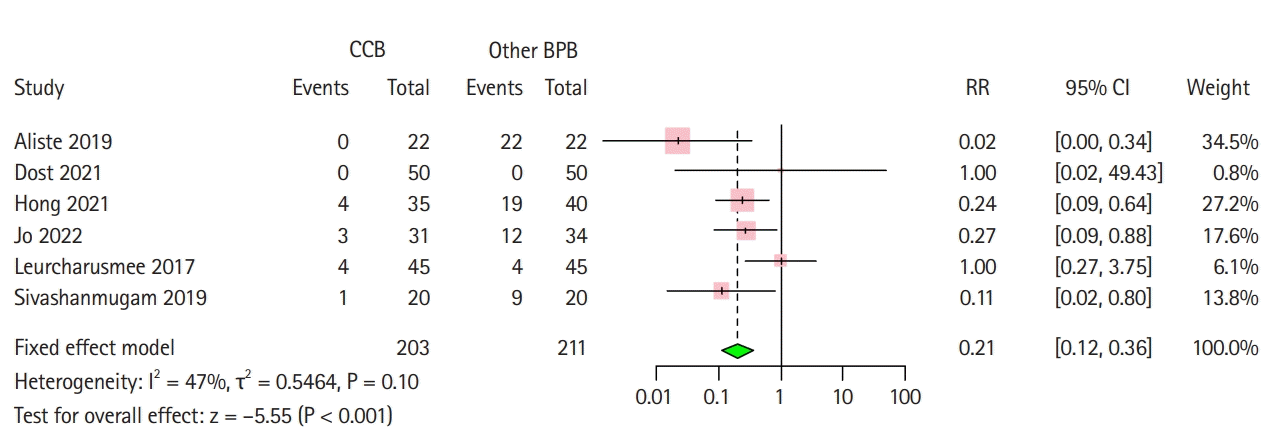1. Hsu AC, Tai YT, Lin KH, Yao HY, Chiang HL, Ho BY, et al. Infraclavicular brachial plexus block in adults: a comprehensive review based on a unified nomenclature system. J Anesth. 2019; 33:463–77.

2. Sala-Blanch X, Reina MA, Pangthipampai P, Karmakar MK. Anatomic basis for brachial plexus block at the costoclavicular space: a cadaver anatomic study. Reg Anesth Pain Med. 2016; 41:387–91.
3. Li JW, Songthamwat B, Samy W, Sala-Blanch X, Karmakar MK. Ultrasound-guided costoclavicular brachial plexus block: sonoanatomy, technique, and block dynamics. Reg Anesth Pain Med. 2017; 42:233–40.
4. Karmakar MK, Sala-Blanch X, Songthamwat B, Tsui BC. Benefits of the costoclavicular space for ultrasound-guided infraclavicular brachial plexus block: description of a costoclavicular approach. Reg Anesth Pain Med. 2015; 40:287–8.
5. Songthamwat B, Karmakar MK, Li JW, Samy W, Mok LY. Ultrasound-guided infraclavicular brachial plexus block: prospective randomized comparison of the lateral sagittal and costoclavicular approach. Reg Anesth Pain Med. 2018; 43:825–31.
6. Hong B, Lee S, Oh C, Park S, Rhim H, Jeong K, et al. Hemidiaphragmatic paralysis following costoclavicular versus supraclavicular brachial plexus block: a randomized controlled trial. Sci Rep. 2021; 11:18749.

7. Sivashanmugam T, Maurya I, Kumar N, Karmakar MK. Ipsilateral hemidiaphragmatic paresis after a supraclavicular and costoclavicular brachial plexus block: a randomised observer blinded study. Eur J Anaesthesiol. 2019; 36:787–95.
8. Leurcharusmee P, Elgueta MF, Tiyaprasertkul W, Sotthisopha T, Samerchua A, Gordon A, et al. A randomized comparison between costoclavicular and paracoracoid ultrasound-guided infraclavicular block for upper limb surgery. Can J Anaesth. 2017; 64:617–25.

9. Petrar SD, Seltenrich ME, Head SJ, Schwarz SK. Hemidiaphragmatic paralysis following ultrasound-guided supraclavicular versus infraclavicular brachial plexus blockade: a randomized clinical trial. Reg Anesth Pain Med. 2015; 40:133–8.
10. Kessler J, Schafhalter-Zoppoth I, Gray AT. An ultrasound study of the phrenic nerve in the posterior cervical triangle: implications for the interscalene brachial plexus block. Reg Anesth Pain Med. 2008; 33:545–50.

11. Gentili ME, Deleuze A, Estèbe JP, Lebourg M, Ecoffey C. Severe respiratory failure after infraclavicular block with 0.75% ropivacaine: a case report. J Clin Anesth. 2002; 14:459–61.
12. Sakuta Y, Kuroda N, Tsuge M, Fujita Y. Hypercapnic respiratory distress and loss of consciousness: a complication of supraclavicular brachial plexus block. JA Clin Rep. 2015; 1:13.

13. Afonso A, Beilin Y. Respiratory arrest in patients undergoing arteriovenous graft placement with supraclavicular brachial plexus block: a case series. J Clin Anesth. 2013; 25:321–3.

14. Satapathy AR, Coventry DM. Axillary brachial plexus block. Anesthesiol Res Pract. 2011; 2011:173796.

15. Nalini KB, Bevinaguddaiah Y, Thiyagarajan B, Shivasankar A, Pujari VS. Ultrasound-guided costoclavicular vs. axillary brachial plexus block: a randomized clinical study. J Anaesthesiol Clin Pharmacol. 2021; 37:655–60.

16. Moher D, Liberati A, Tetzlaff J, Altman DG; PRISMA Group. Preferred reporting items for systematic reviews and meta-analyses: the PRISMA statement. PLoS Med. 2009; 6:e1000097.

17. Luo D, Wan X, Liu J, Tong T. Optimally estimating the sample mean from the sample size, median, mid-range, and/or mid-quartile range. Stat Methods Med Res. 2018; 27:1785–805.

18. Wan X, Wang W, Liu J, Tong T. Estimating the sample mean and standard deviation from the sample size, median, range and/or interquartile range. BMC Med Res Methodol. 2014; 14:135.

19. Sterne JA, Savović J, Page MJ, Elbers RG, Blencowe NS, Boutron I, et al. RoB 2: a revised tool for assessing risk of bias in randomised trials. BMJ. 2019; 366:l4898.

21. Atkins D, Best D, Briss PA, Eccles M, Falck-Ytter Y, Flottorp S, et al. Grading quality of evidence and strength of recommendations. BMJ. 2004; 328:1490.

22. Balduzzi S, Rucker G, Schwarzer G. How to perform a meta-analysis with R: a practical tutorial. Evid Based Ment Health. 2019; 22:153–60.

23. Viechtbauer W. Conducting meta-analyses in R with the metafor package. J Stat Softw. 2010; 36:1–48.
24. R Foundation for Statistical Computing. The R project for statistical computing [2022 Nov 8]. Available from
https://www.r-project.org.
25. IntHout J, Ioannidis JP, Borm GF. The Hartung-Knapp-Sidik-Jonkman method for random effects meta-analysis is straightforward and considerably outperforms the standard DerSimonian-Laird method. BMC Med Res Methodol. 2014; 14:25.

26. Dost B, Kaya C, Ustun YB, Turunc E, Baris S. Lateral sagittal versus costoclavicular approaches for ultrasound-guided infraclavicular brachial plexus block: a comparison of block dynamics through a randomized clinical trial. Cureus. 2021; 13:e14129.

27. Aliste J, Bravo D, Layera S, Fernández D, Jara A, Maccioni C, et al. Randomized comparison between interscalene and costoclavicular blocks for arthroscopic shoulder surgery. Reg Anesth Pain Med. 2019; 44:472–7.

28. Jo Y, Oh C, Lee WY, Chung HJ, Park J, Kim YH, et al. Randomised comparison between superior trunk and costoclavicular blocks for arthroscopic shoulder surgery: a noninferiority study. Eur J Anaesthesiol. 2022; 39:810–7.
29. Oh C, Noh C, Eom H, Lee S, Park S, Lee S, et al. Costoclavicular brachial plexus block reduces hemidiaphragmatic paralysis more than supraclavicular brachial plexus block: retrospective, propensity score matched cohort study. Korean J Pain. 2020; 33:144–52.

30. Dubé BP, Dres M. Diaphragm dysfunction: diagnostic approaches and management strategies. J Clin Med. 2016; 5:113.

31. Urmey WF, Talts KH, Sharrock NE. One hundred percent incidence of hemidiaphragmatic paresis associated with interscalene brachial plexus anesthesia as diagnosed by ultrasonography. Anesth Analg. 1991; 72:498–503.

32. Midia M, Dao D. The utility of peripheral nerve blocks in interventional radiology. AJR Am J Roentgenol. 2016; 207:718–30.

33. Rameshi SM, Janardhaniyengar SM, Kantharaju S. Comparison of ultrasound guided costoclavicular brachial plexus block versus supraclavicular brachial plexus block for forearm and hand surgeries for surgical anaesthesia: a prospective randomised clinical study. Indian J Clin Anaesth. 2021; 8:96–101.









 PDF
PDF Citation
Citation Print
Print



 XML Download
XML Download